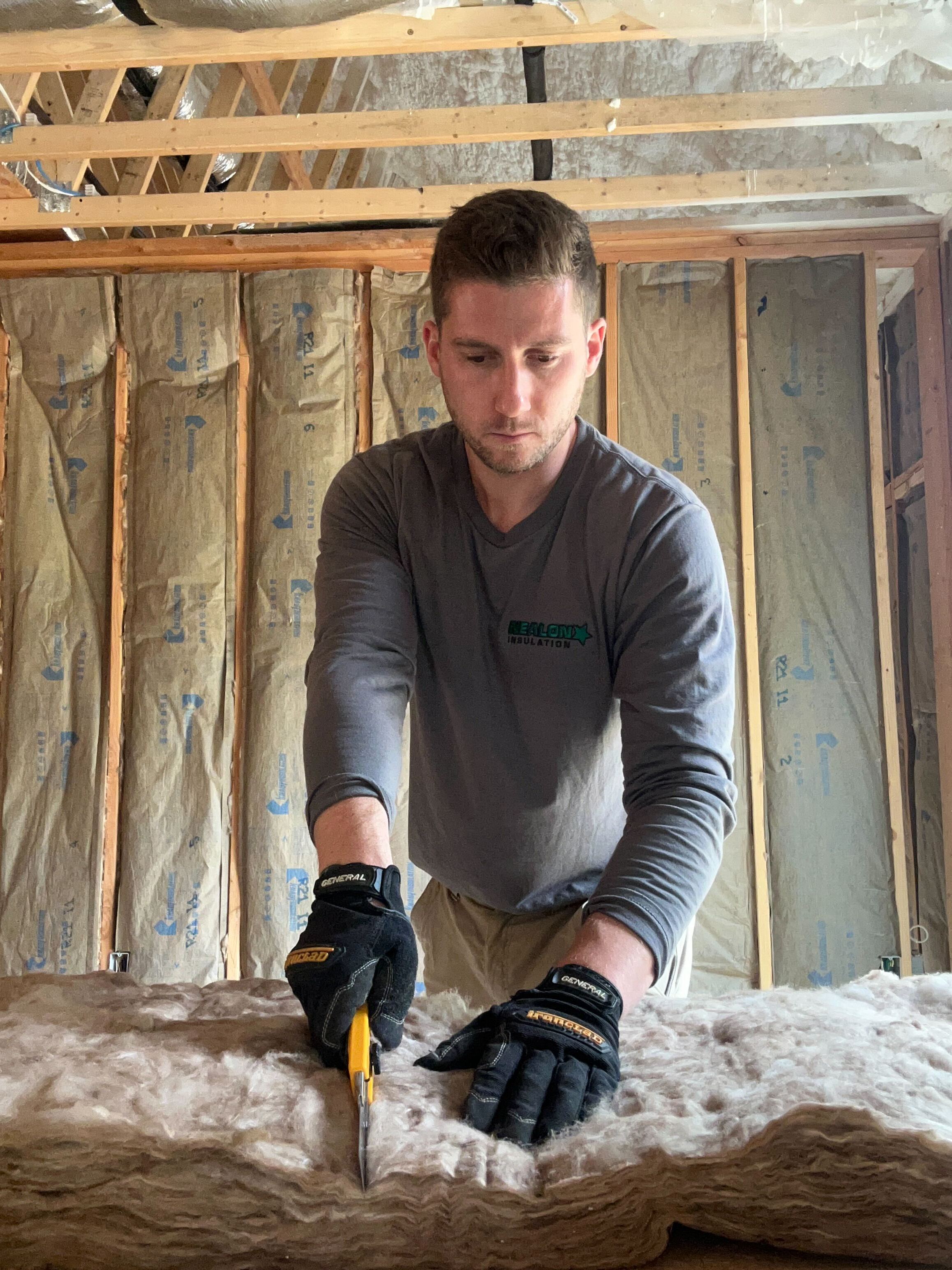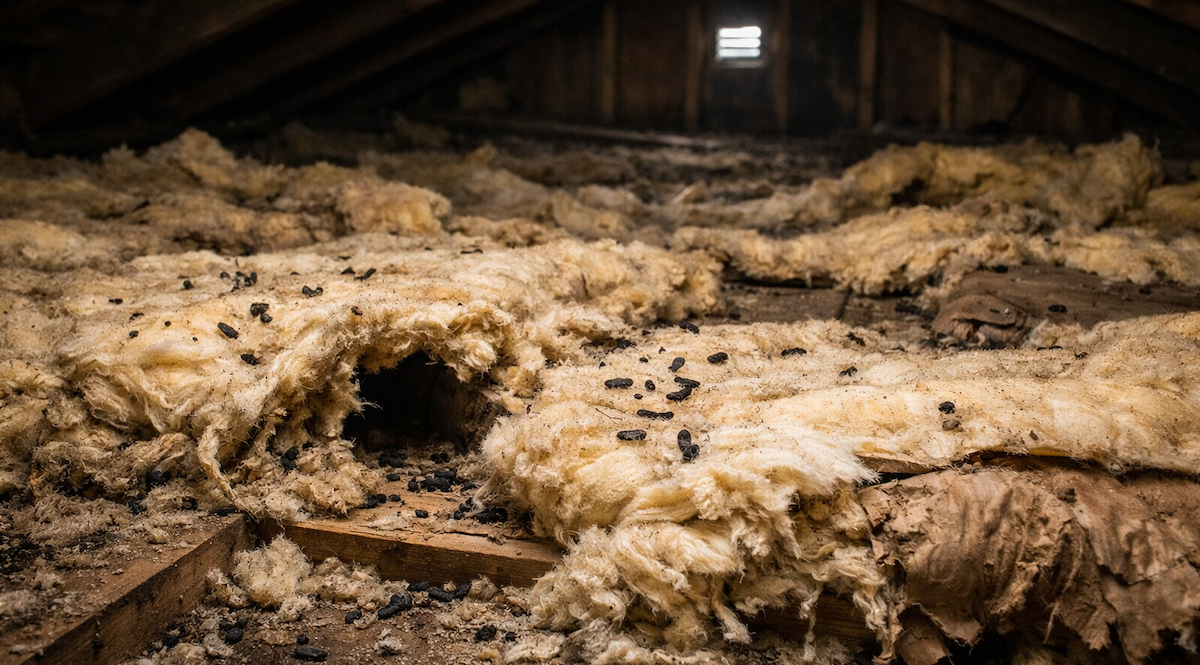Why Is My Insulation Not Working? Common Problems & Solutions

You crank the heat and still need three blankets. You blast the AC and your second floor still feels like the inside of a bread oven. Meanwhile, your energy bill looks like a car payment.
So you’re asking: "What is going on? I have insulation. Why isn't it working?"
Good question. Insulation should keep your home comfortable year-round. But just having it doesn’t mean it’s doing its job. Like anything else in a house, it can be installed wrong, wear out, or just not be the right fit for where you live.
Let’s break down the most common reasons insulation underperforms—and how to fix them before winter (or summer) bites back.
1. Not Enough Insulation (a.k.a. Your R-Value’s on Life Support)
The problem: You might have insulation, but not enough of it. It’s like wearing a windbreaker in January—technically clothing, but not keeping you warm.
Why it matters: Insulation works by resisting heat transfer. Not enough R-value = heat leaks out in winter, seeps in during summer.
The fix:
Here’s what Connecticut homes should have:
- Attic: R-49 to R-60
- Walls: R-13 to R-21
- Floors: R-25 to R-30
- Basements/Crawl Spaces: R-10 to R-19
If you’re way below those numbers, it’s time to bulk up. We recommend blown-in cellulose insulation—it packs tighter, performs better, and actually stays where it’s supposed to.
2. Your Insulation’s Old and Saggy
The problem: Insulation doesn’t last forever. Over time, it compresses, shifts, settles—or just plain gives up.
Why it matters:
- Fiberglass batts can slump or fall out of place.
- Older blown-in fiberglass settles like sand in an hourglass.
- Even old cellulose can sag if it was installed before modern treatments.
The fix:
Have your attic checked. If your insulation looks like a pancake instead of a fluffy cake, it’s not doing much. We typically top off or replace with modern cellulose—it stays in place better and keeps your R-value high.
3. You’ve Got Air Leaks Everywhere
The problem: Even the best insulation can’t stop air that’s sneaking around it. Drafts around windows, doors, can lights, attic hatches—these are the usual suspects.
Why it matters:
- In winter: warm air escapes, cold air creeps in.
- In summer: your cooled air leaks out like a deflating balloon.
The fix:
- Weatherstrip doors and windows
- Seal attic penetrations before insulating
- Use spray foam or rigid foam to block bigger gaps (pipes, vents, etc.)
- Pro tip: Never insulate before you air seal. That’s just putting a blanket over a broken window.
4. Moisture Is Wrecking Your Insulation
The problem: If your attic or basement has poor ventilation, leaks, or condensation, you could have wet insulation.
Why it matters:
- Wet fiberglass is basically useless.
- Spray foam can trap moisture—mold loves that.
- Moisture flattens insulation and kills your R-value.
The fix:
- Choose cellulose—it handles moisture better than fiberglass.
- Improve attic or crawl space ventilation.
- Fix any roof leaks, flashing gaps, or foundation cracks ASAP.
5. It Was Installed Like a Weekend DIY Project (a bad one)
The problem: We see this all the time—gaps, compressions, missed spots. Doesn’t matter how good the material is if it’s not installed right.
Why it matters:
- Gaps = heat loss
- Compressed batts = reduced R-value
- No air sealing = insulation gets bypassed completely
The fix:
- Hire pros (like us). Seriously. It matters.
- We blow in dense-pack cellulose that fills every nook, cranny, and gap.
- We don’t just dump insulation and leave—we air seal first, every time.
6. Rodents Turned Your Attic into an Airbnb
The problem: Mice, squirrels, and raccoons love insulation. It’s warm, it’s soft, and they don’t care if it’s supposed to keep your energy bills low.
Why it matters:
- They tear up your insulation
- Their waste contaminates it
- They create airflow gaps and invite mold
The fix:
- Seal up entry points (soffits, vents, roof lines)
- Use borate-treated cellulose, which pests hate
- Remove and replace any contaminated insulation
7. You Picked the Wrong Type of Insulation
The problem: Not all insulation is built for New England. What works in Arizona doesn’t always work here.
Why it matters:
- Fiberglass batts leak air and settle
- Spray foam can trap moisture and costs a fortune to fix if things go south
- Rigid foam works in basements, but not great in attics
The fix:
Go with blown-in cellulose for most applications. It checks all the boxes:
- High R-value
- Pest-resistant
- Moisture-tolerant
- Fills every gap
- Made for our climate
Common FAQ's about Insulation
What’s the best insulation type for New England homes?
The best insulation type for New England homes is blown-in cellulose. It offers strong moisture resistance, fills wall cavities completely, deters pests, and retains its R-value over time. Spray foam is great for sealing rim joists, while fiberglass batts are less reliable unless installed flawlessly.
Will new insulation help with uneven temperatures between floors?
Yes, new insulation helps reduce uneven temperatures between floors. Inadequate attic insulation and air leaks often cause hot upper levels and cold lower ones. Adding proper R-value insulation and sealing gaps stabilizes indoor temperatures, especially in older homes with insufficient attic protection.
Can rodents really ruin my insulation?
Yes, rodents can ruin your insulation. Mice and squirrels often nest in attics, shredding insulation, leaving droppings, and creating gaps that reduce energy efficiency. Contaminated insulation usually needs removal and replacement. Sealing entry points is essential to prevent future infestations and restore insulation performance.
How do I know if my insulation was installed correctly?
You can tell if insulation was installed correctly by checking for even coverage, no gaps, and proper depth. Poor installation often shows as compressed or slumped insulation, drafty rooms, or uneven temperatures. A professional inspection helps confirm quality and spot air sealing or coverage issues.
How We Can Help (Without the Sales Fluff)
At Nealon Insulation, we’ve been fixing insulation problems since bell bottoms were a thing (1977, to be exact). Whether your attic needs a full rehab or just a tune-up, we know what works in Connecticut homes.
✅ Free insulation inspections
✅ Specialists in blown-in cellulose
✅ EnergizeCT rebates to help you save
✅ No pressure—just straight answers
Bottom line: If your insulation isn’t working, there’s always a reason. Let’s find it—and fix it right.
📞 Give us a call or book a free inspection. We’ll get your home feeling like home again.
Related Articles
Let's Work Together
Ready to transform your home into an energy-efficient haven? Schedule your free energy assessment today and experience the Nealon difference for yourself.



